So you want to buy a whole house dehumidifier, but you don't want to deal with the hassle of installing huge ducts. If you're in doubt that there’s another way to pull and drain the water vapor, you're on the right page. We’ve done the research to provide you with the best answer.
You can’t use a whole house dehumidifier without ducts. This is because the dehumidifier should be connected to your HVAC system. The air drawn into the ducts goes through the dehumidifier, then to the air conditioner, and back into your home.
Keep reading to understand the importance of ducts in a whole home dehumidifier. But first and foremost, let's delve into how the appliance works.
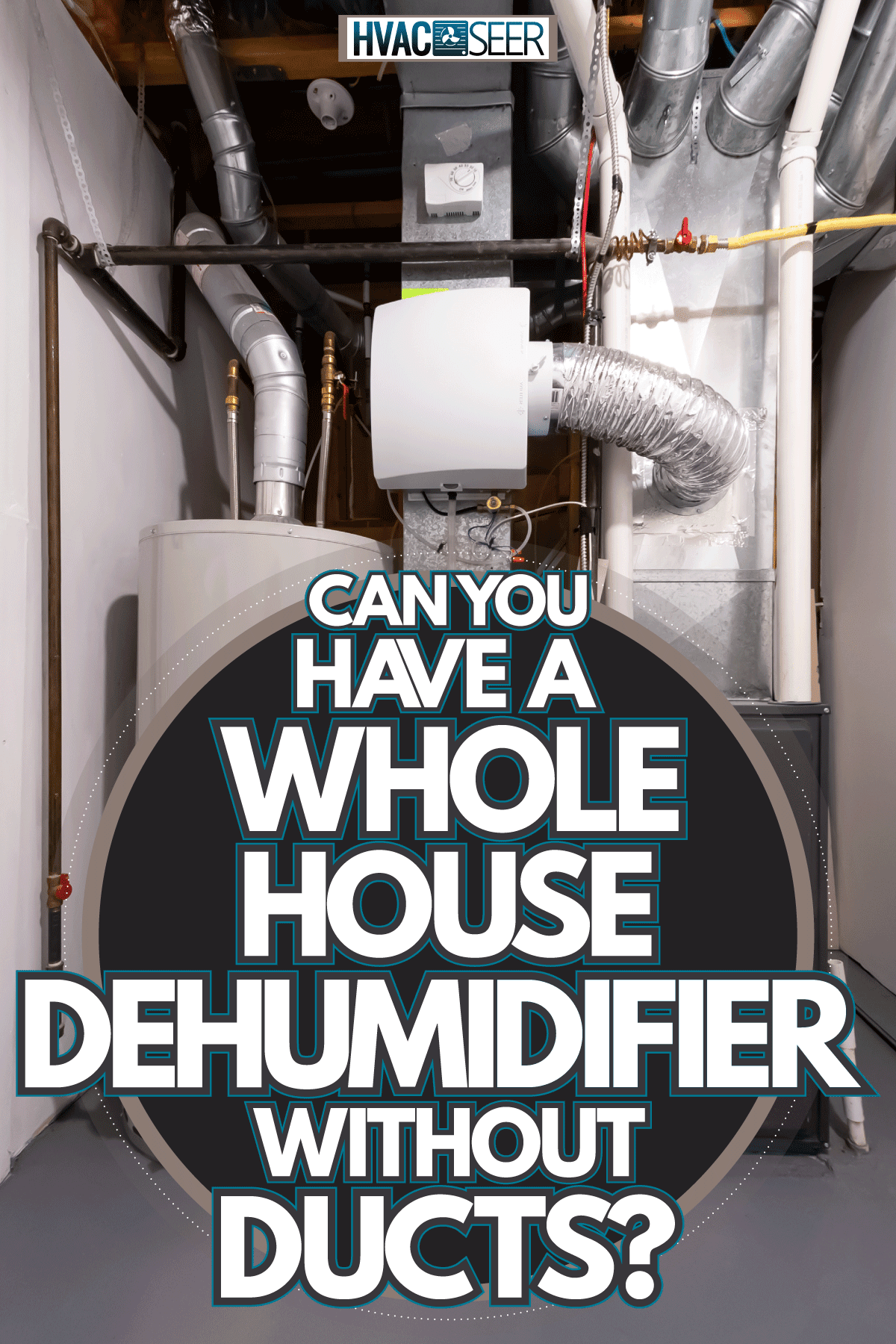
Whole House Dehumidifier: How Does It Work?
A whole house dehumidifier is installed along the return duct leading into your indoor cooling system. Once the air warms, humid air enters the HVAC system, it travels through the whole house dehumidifier. It is then dehumidified by the evaporator coil. As it condenses, it turns into liquid, thus reducing humidity.
The condensation caught in the reservoir is emptied into a nearby drain. The newly dehumidified air then passes through the air conditioner for cooling before it is released back inside your home. That's why an air duct is required.
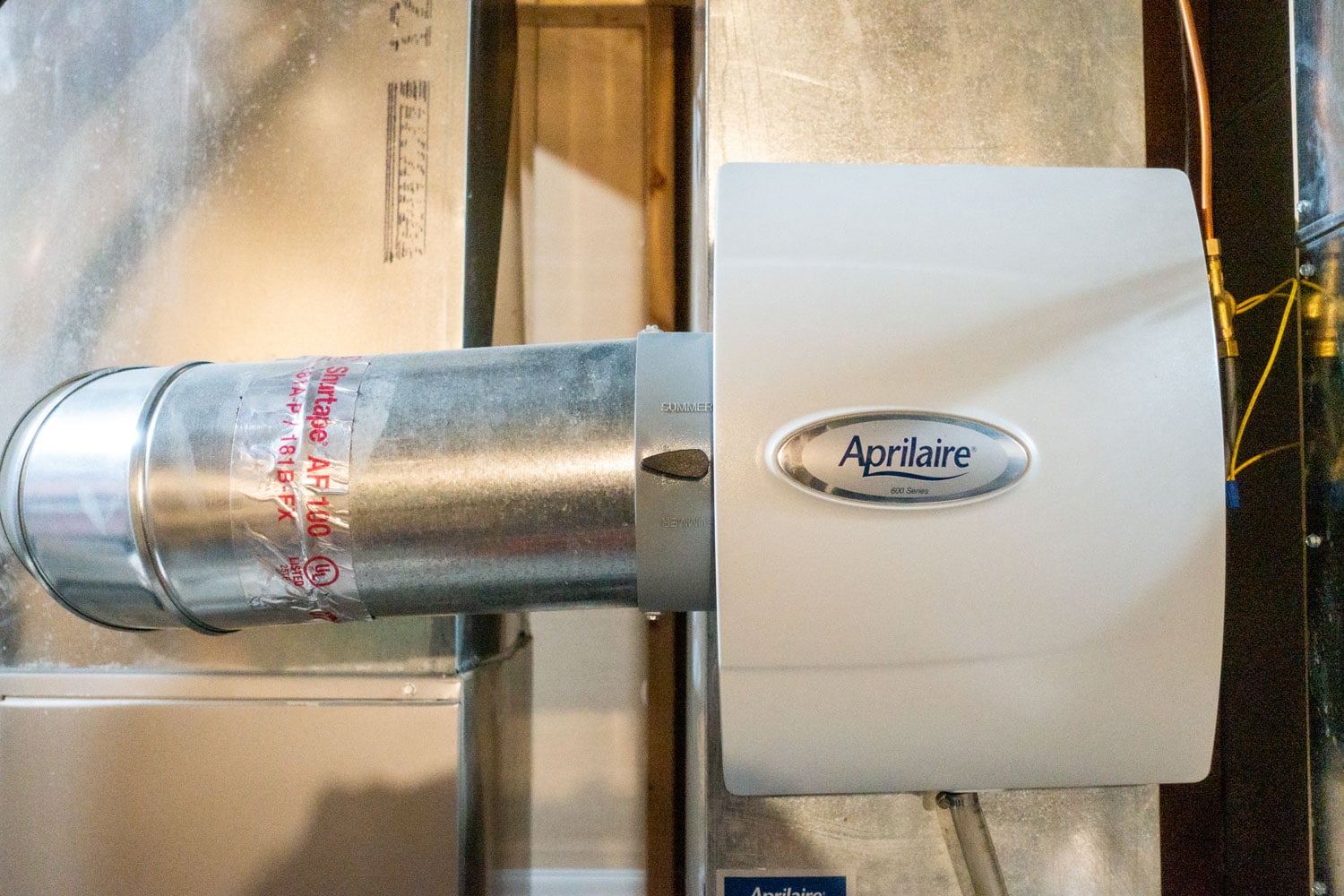
Why Use A Whole House Dehumidifier?
High humidity at home can be extremely unpleasant and lead to serious problems. Air conditioners and portable dehumidifiers can temporarily keep the humidity low, but a whole house dehumidifier makes an effective long-term solution.
The system is designed to simultaneously remove excess moisture from the air in different areas of your house such as the basement, crawlspace, kitchen, and bathroom.
Check out this dehumidifier on Amazon.
Harmful Effects Of Excessive Humidity
The negative effects of extremely high humidity include:
Mold And Mildew
These fungi are everywhere. But they find wet and dark homes the perfect environment to settle and grow. If left unchecked, they can destroy the things they live on, including furnishings, books, and carpets. They can also undermine structural integrity.
Scaly Paint And Wallpaper
The exterior of a home can absorb moisture, which is then released when the temperatures drop. This can lead to flaky wallpaper and paint.
Wooden Furnishing And Flooring Deterioration
When a home's humidity is too high, wooden furniture and floorings will rot and decay. If not dealt with promptly, it can cause irreversible damage to your property.
Damaged Walls
Walls have air and vapor barriers to prevent moist air from penetrating. But they don’t always work perfectly, especially when the weather is warmer, vapor can get into the material’s foundation which can lead to structural defects.
Advantages Of A Whole House Dehumidifier
A whole house dehumidifier guarantees the following:
Maximized Cooling Efficiency
A whole house dehumidifier cools the air passing through. This means less effort for the air conditioner to bring down the temperature. In a way, it also means lower energy consumption which can significantly reduce your electricity bill.
Quality Indoor Air
As humidity levels go down, air quality improves. This minimizes health risks associated with molds and mildew.
Fewer Pests
If the humidity level falls below 50%, insects will go elsewhere. So there’s no need to worry about bugs, spiders, and other pests!
How To Install A Whole House Dehumidifier
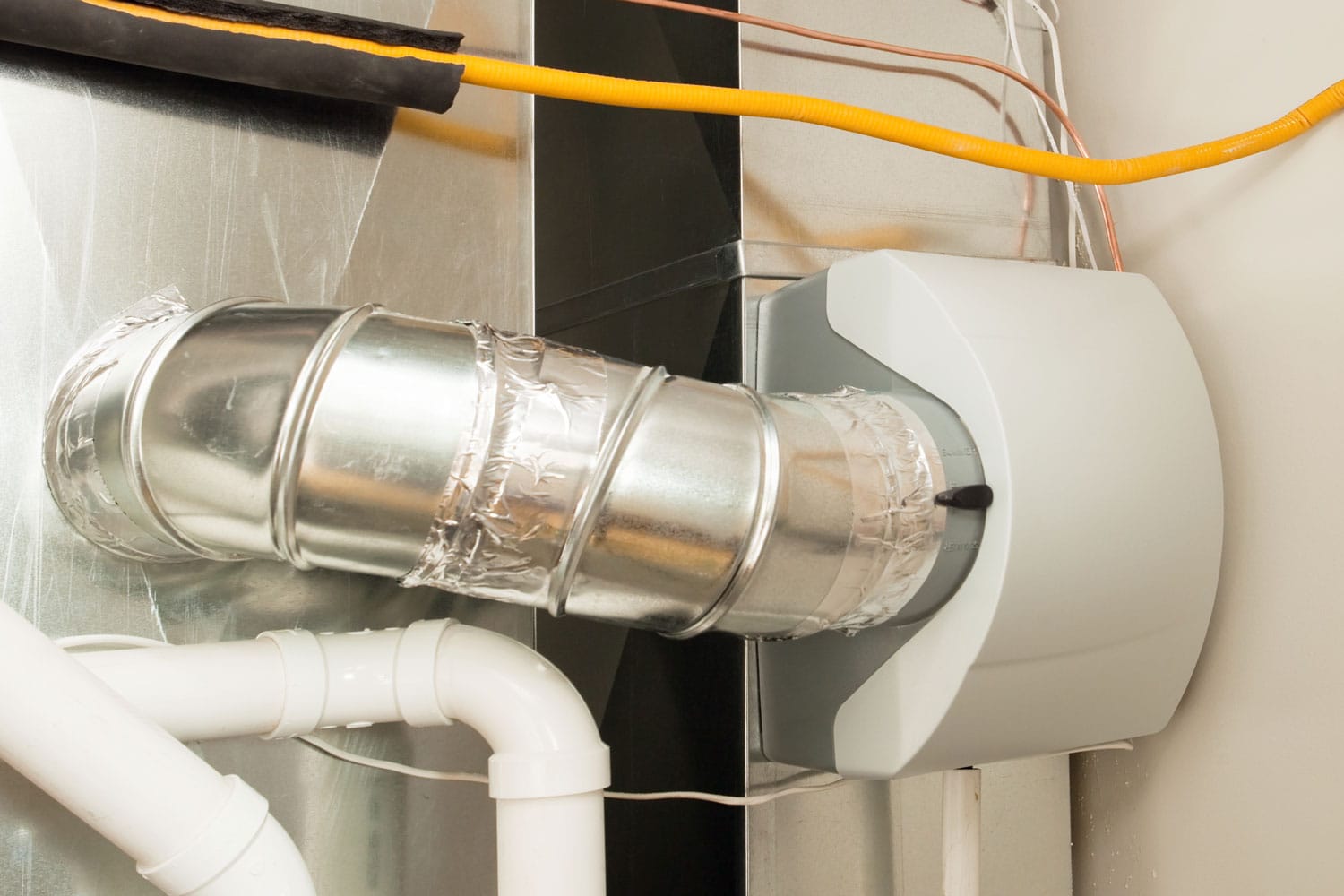
Today, the most preferred method is adding a dedicated return supply duct. Here's how to do it:
- Attach a new return duct. If you have a two-story home, it should come from the bottom and must have its own grilled like your HVAC return.
- Release the dry air into the supply plenum. Once the air has been dehumidified, it must discharge to the supply plenum of the HVAC, so it can enter your home through the HVAC pathways.
- Make adjustments based on the static pressure. Running the air conditioner and dehumidifier at the same time can result in high static pressure, which sometimes can be tolerable. But if it gets too high, you may have to run your dehumidifier independently.
Don’t hesitate to contact your HVAC company if you cannot do it.
How Much Does A Whole House Dehumidifier Cost?
Whole home dehumidifiers come in at a hefty price of $1,000 to $3,000. They might seem like a risky investment. But, you can count on them to deliver maximum comfort and minimize air conditioning costs for years.
How Long Does A Whole House Dehumidifier Last?
With proper upkeep, a whole house dehumidifier can last up to 10 years. One simple way to extend its lifespan is to simply turn it off during the winter or when not needed. Some come with an auto switch, which turns the machine off unless there’s a higher humidity level.
Other Types Of Dehumidifiers
Here are other options available:
Desiccant Dehumidifiers
Desiccant dehumidifiers are originally developed to remedy water-damaged materials. They are used mostly in jobs that involve humidity control. They work by extracting water from the air that passes through the hygroscopic substance. It has two chambers: one soaks up the moisture and the other expels the water vapor.
Check out this basement desiccant dehumidifier on Amazon.
Room Dehumidifiers
This compressor-based type works just like an air conditioner. It consists of a condenser, an evaporator coil, and a compressor that work together to speed up the cooling process and increase evaporation while discharging air. The unit can remove moisture from one room at a time only.
One drawback of room dehumidifiers is that they need to be emptied every once in a while. (Some of them have drains that can be vented to the outside.) They also don’t come with filters, making them susceptible to dust buildup.
Check out this dehumidifier on Amazon.
How Long Does It Take For A Whole House Dehumidifier To Work?
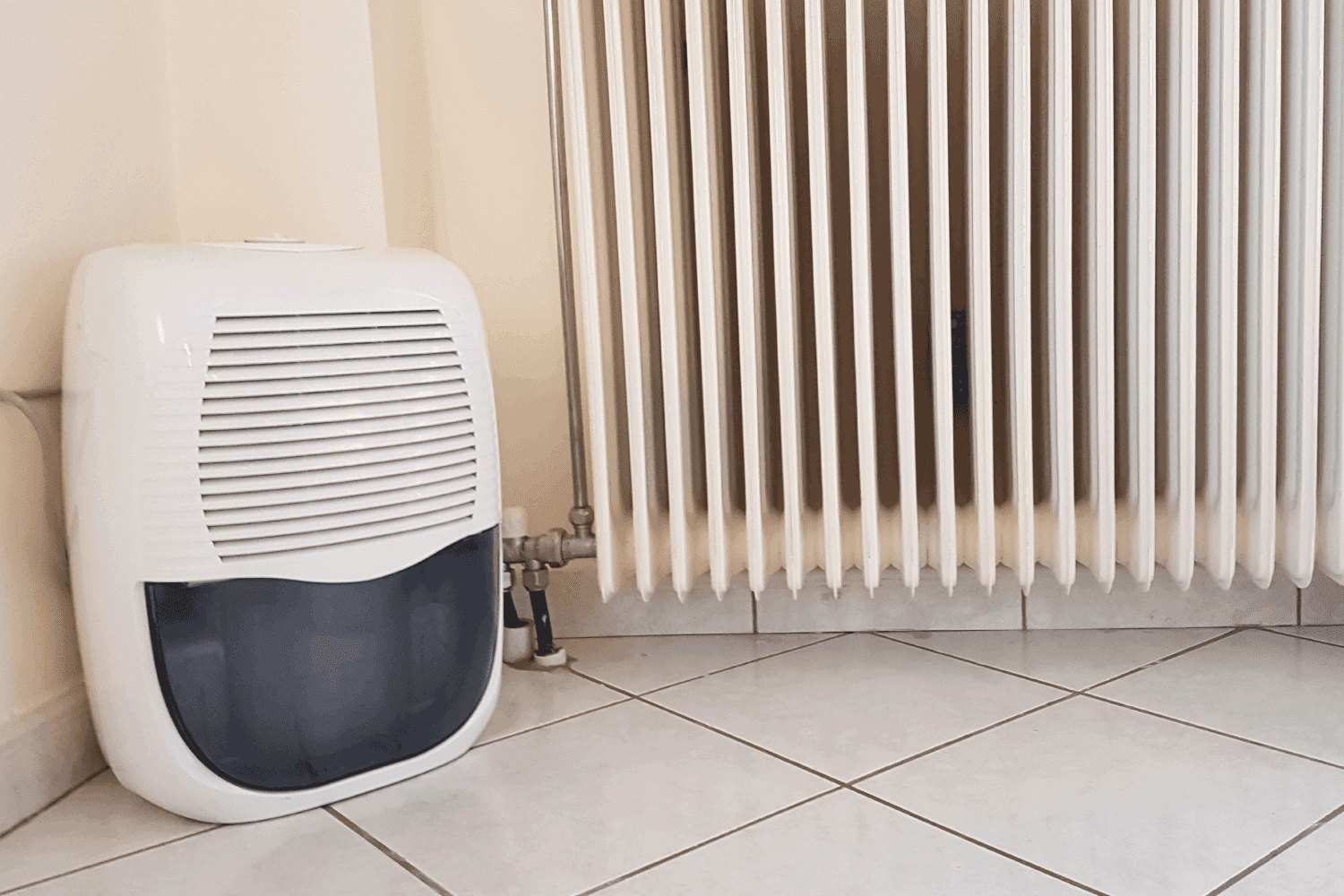
It depends on the humidity level at home. It can take a whole house dehumidifier 12 to 24 hours to get rid of the moisture. A 50% humidity level will only take 6 hours to treat. The unit turns off automatically once the water is removed.
How Does Humidity Get Into Your Home?
Check out the common culprits for humidity in the house:
- You may not even be aware of it, but cooking, washing the dishes, running the washing machine, taking a shower, and sweating can all introduce moisture into your home. This is especially common for those with a large family.
- Leaks are indeed a major culprit for moisture, so take time to find out where the leaks are. They could be coming from the loose roof tiles, cracked pipes, or water heater.
- Rising dampness also contributes to high humidity at home. This is when moisture from the ground rises through the bricks and mortar, damaging the wall.
Can A Dehumidifier Get Rid Of Odor?
A dehumidifier sucks the moisture out of the air that produces a musty smell. So yes, it can get rid of the odor and keep your house smelling clean. Want to add more fragrance? You might as well use a diffuser, which is a device that disperses and spreads essential oil into the air.
Check out this essential oil diffuser on Amazon.
Is An Air Purifier The Same As A Dehumidifier?
Air purifiers remove particles that contaminate the air as mold spores, smoke, and dust. Dehumidifiers remove moisture from the air, reducing its humidity level, killing pollutants and microbes that grow in moisture. They might have similar features, but they are totally different.
Tips For Controlling The Humidity At Home
Here are other ways to reduce humidity indoors:
Turn On The AC
An air conditioning can also act as a dehumidifier by keeping a comfortable humidity level. Just be sure to regularly replace the filter as clogged filters can stifle airflow.
Maintain Proper Ventilation
Ventilation is a great way to channel humidity out when you cook or do laundry. Make sure that the exhaust fan is open or crack the window to improve circulation.
Take Cold Showers
The warmer the temperature, the higher the humidity level. One way to combat this is to take colder showers. You may also want to consider using a low-flow showerhead; it’s designed to minimize the amount of water being wasted.
Take Out Indoor Pants
Water evaporates from the soil of indoor plants. Consider taking them out before watering them and leaving them there until the soil dries out.
Hang Clothes Outside
A dryer is also one of the major contributors to humidity. Instead of relying on it to dry your clothes, try hanging them outside. If you have to use it, vent the drain outside.
In Closing
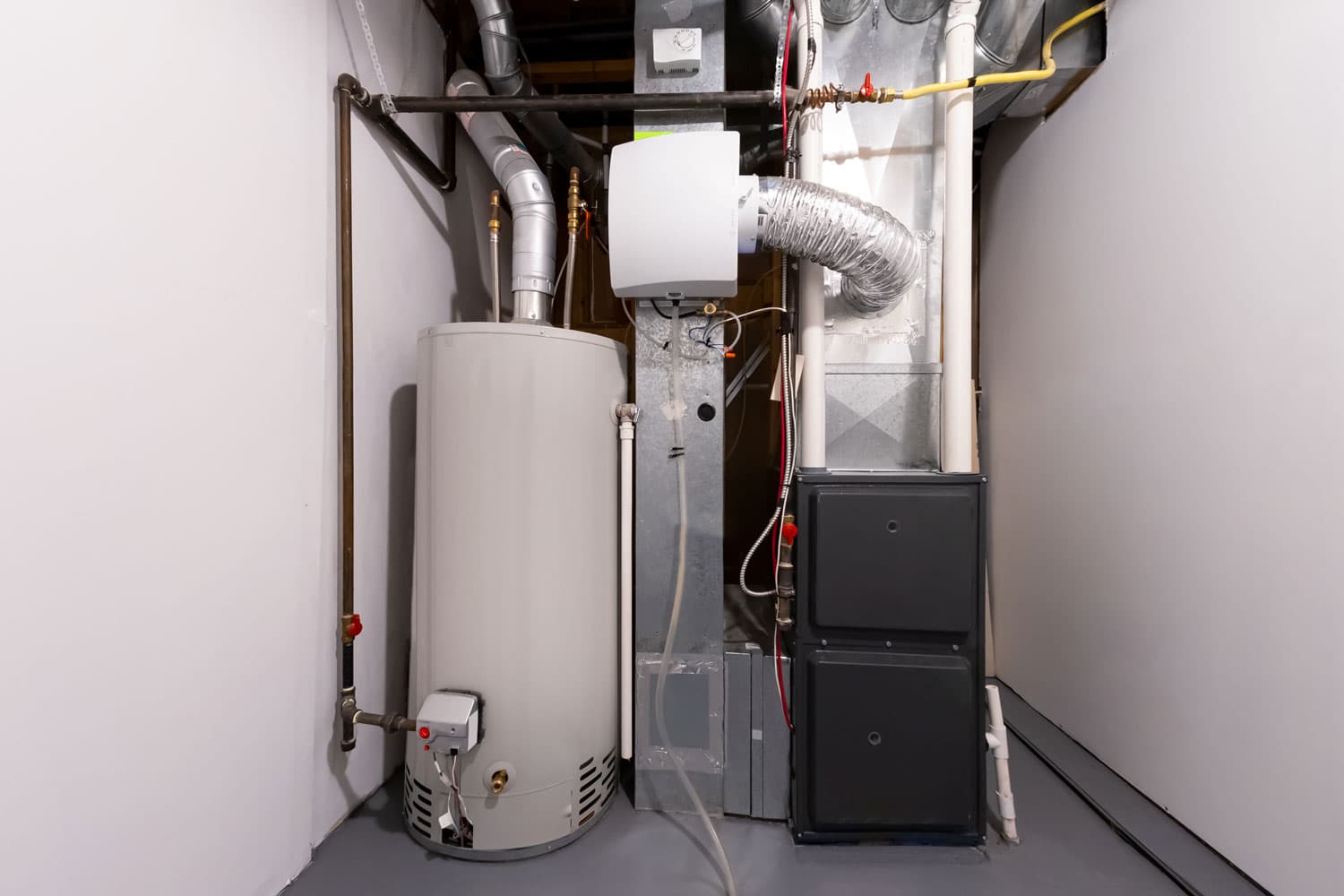
A whole house dehumidifier maintains a comfortable level of humidity throughout your home to prevent the growth of mold and other issues that arise from too much moisture. However, it requires an air duct to draw and drain water vapor.
If you liked this post, you might also like the following:




